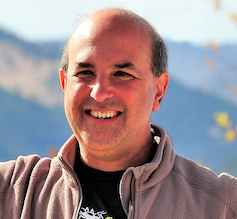There was an interesting news item in the October 9 edition of Nature about applying group theory to scientific authorship by John Whitfield. Although it didn’t mention this at all, it started me thinking about group sizes in classes. The essay starts by pointing out that scientific studies used to have single authors, but over the last few decades, single author papers have become vanishingly rare (personally I think I’ve published one, out of around 20 papers, and that one was a review). Apparently there is now a wave of work from several labs looking at the nature of scientific collaborations, as evidenced by authorship on papers, and how productive different kinds of collaborations are. Some of the interesting points:
- If you team up with someone from another institution (of equal or higher tier to your own), the resulting papers are more highly cited than if you team with someone from your own institution.
- If you specialize and work mostly with people in your own field, or you become a big generalist and work with people in a wide range of fields, you get highly cited papers. But in the middle (people who work with an intermediate number of other fields) you get less successful papers.
- In large interdisciplinary groups, the more diverse they were, the less productive they were, but groups where the authors had previous papers together were much more successful than others.
- Large collaborations (say a team of around 20) were more successful if they had a high rate of turnover, but small groups (say 3 to 4) were more successful if they were stable. But stable small groups tend to publish lower impact papers over time.
- Some of these results hold true in other types of collaborations too (one study talked about broadway musicals showing similar trends)
There’s more—it’s a fun read for a bunch of fuzzy science based on a lot of statistical data-mining. What got me thinking, though, was asking how many of these results about collaborations among professional scientists might apply to student collaborations as well? Group work is a big part of most biology lab courses. Traditionally, students are paired up in the lab. I know there is a literature on grouping students (that I’m not as familiar with as I should be). I remember one study talking specifically about computer labs and saying that 3 students per computer was ideal, 2 was also good, and either were better than one or four students per computer. There are lots of other creative groupings that people have come up with in their own classes. Especially in interdisciplinary classes, students are often grouped so that each group has a mix from the different disciplines in the class. Some classes retain groups through the whole semester, while others deliberately shuffle the groups every now and again. One interesting example in the news recently was from the Last Lecture by Randy Pausch who discussed how he ran a computer animation class, with groups of several students that were semi-randomly rotated several times through the semester.
There are also a small but increasing number of studio biology style classes, modeled after classes pioneered in the physics education community, which sit 9 students around a table, in groups of 3, to do problems. I know of classes like this who use our virtual labs at RPI, University of Minnesota, and Kansas State among others. In these cases, the students are placed in groups within groups (I think the groups generally stay the same through the semester).
So if academic teams are most productive in either small stable groups, or larger groups with constant turnover, is that the same for groups of students learning biology? In interdisciplinary classes, are groups of students drawn from different departments more variable in how well they do, or are undergraduate students not specialized enough yet for that to be an issue? Do very broad or very specialized classes lead to more learning than classes that try to straddle those (analogous to the generalist and specialist authors doing better)? I’m curious now to look and see whether there is literature addressing any of those questions, but I’m guessing a lot of them are still open—and I’m also guessing, given the diversity of classes across the country, some initial stabs at answering them could be done with a broad survey of biology professors who are trying creative learning strategies.
– Eli Meir, SimBio founder and author




